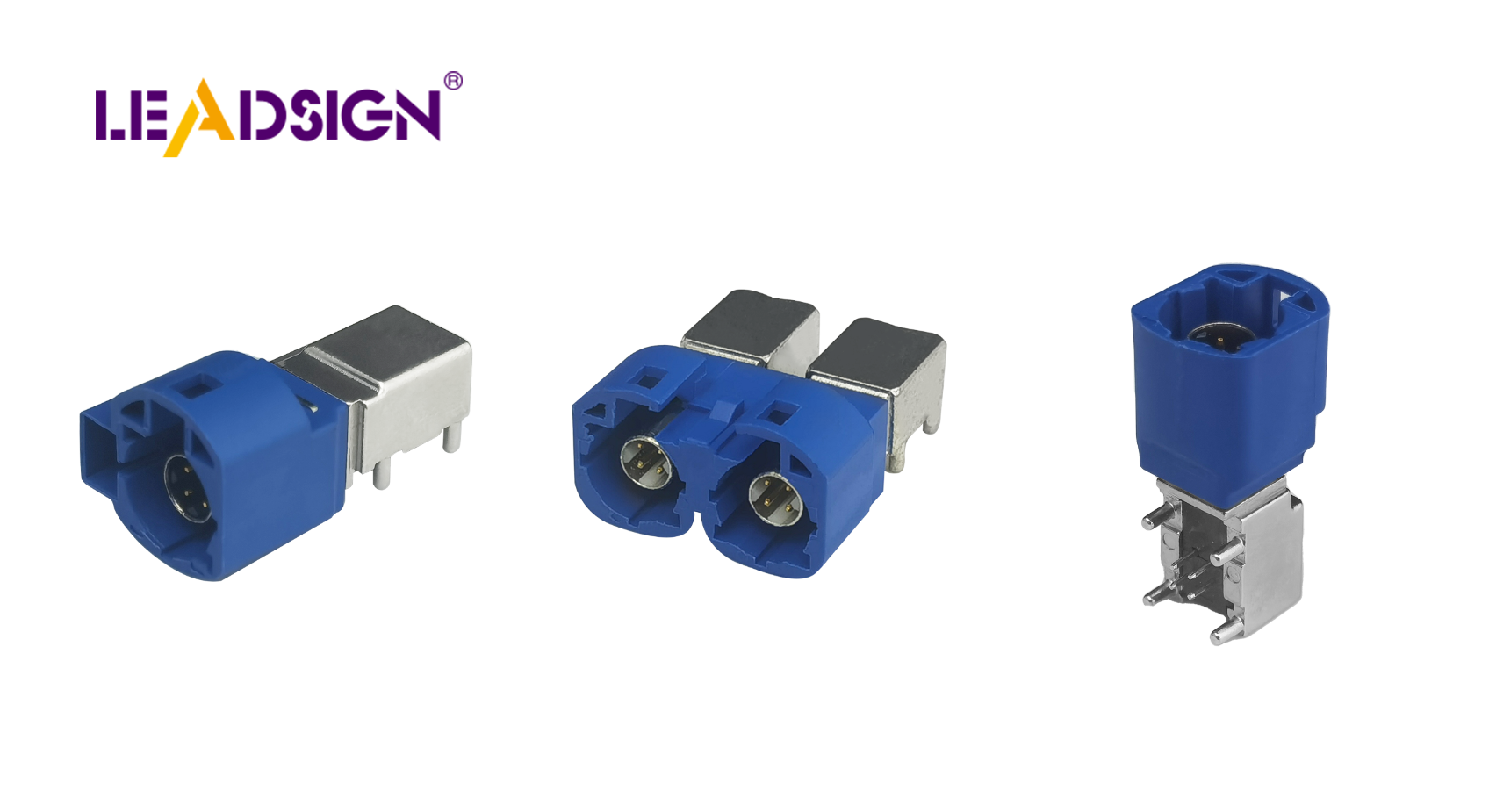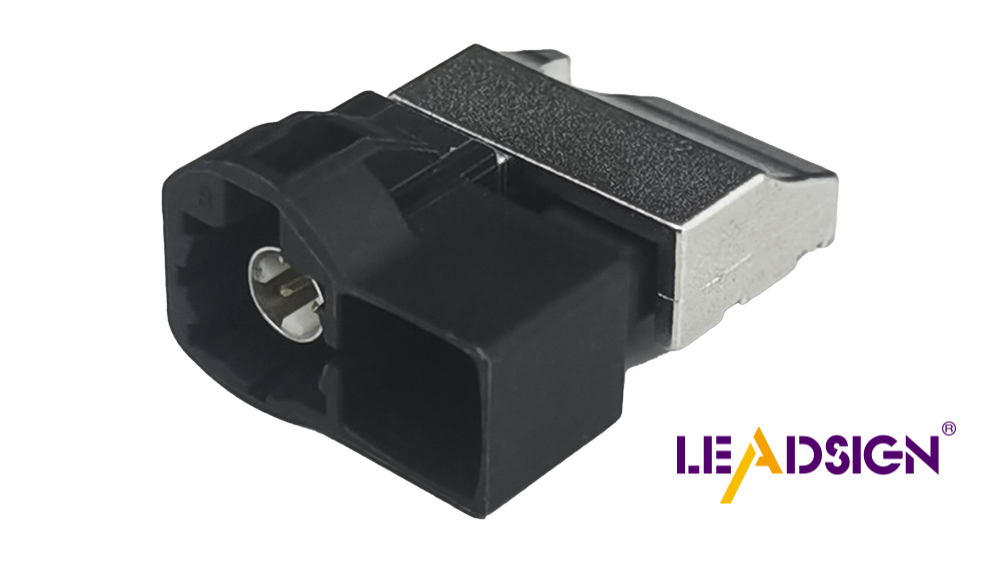Never Underestimate Vehicle Connectors in EVs

Vehicle connectors are very important in electric cars. You might not know it, but these connectors are heroes. They help your car run well. They join different car parts, letting electricity move easily. This makes your electric car work better and stronger. Also, connectors keep you safe by stopping electrical problems. When you drive an electric car, you trust these connectors. Knowing their importance helps you value your car's technology.
Key Takeaways
High current connectors are essential for electric vehicles, managing significant electric loads to ensure efficient power transmission from the battery to various components.
These connectors enhance vehicle efficiency by minimizing energy loss, allowing more power to reach the motor for improved performance and longer driving ranges.
Safety features in high-voltage connectors, such as the High Voltage Interlock Loop (HVIL), are crucial for preventing electrical hazards and ensuring safe operation.
Understanding the design and materials used in high-voltage connectors can help you appreciate their role in maintaining the reliability and safety of your electric vehicle.
As technology advances, expect connectors to become smaller, lighter, and more user-friendly, enhancing the overall experience of owning and operating an electric vehicle.
Familiarize yourself with different EV charging connector types to ensure safe and efficient charging, as each type is designed for specific charging needs.
Staying informed about industry standards and compliance can help you understand the safety measures in place for high-voltage connectors in electric vehicles.
Importance of High Current Connectors

High current connectors are key in electric cars. They help your car work well and safely by controlling electricity flow. Knowing their role helps you see how they boost your car's performance.
Role in Power Transmission
High current connectors are vital for power in electric cars. They manage big electric loads, letting electricity move from the battery to parts. Unlike normal connectors that handle 1-5 amps, these can manage 20-100 amps. This means your car gets power without overheating. Their strong build makes them good for heavy use.
Contribution to Vehicle Efficiency
Your car's efficiency relies on high current connectors. They cut energy loss, so more power reaches the motor. This means better performance and longer drives. For example, connectors with 3.6mm pins carry 70A, while 6.0mm pins handle 120A. By managing high currents well, they help your car run fast and long.
Technical Aspects of High-Voltage Connectors
Knowing about high-voltage connectors is important for electric car fans. These connectors help your car work well and safely. Let's look at their design, materials, and how they handle electricity.
Design and Materials
High-voltage connectors are made carefully for electric cars. Their design helps them manage big electric loads for good power transfer.
Key Design Considerations
When making high-voltage connectors, engineers think about:
Safety: The design stops electrical dangers, keeping you safe while driving.
Durability: They must last through tough conditions like heat changes and shaking.
Ease of Use: They should be easy to plug in and out, saving time on repairs.
These points make sure high-voltage connectors work well in different situations.
Common Materials Used
Materials in high-voltage connectors are picked for good electricity flow and strength. Common ones are:
Copper: It conducts electricity well, used in connector parts.
Plastic: Good plastics insulate and protect from water and dust.
These materials help high-voltage connectors work well in electric cars.
Current Capacity and Efficiency
High-voltage connectors need to handle lots of electricity to power your car well. Their design and materials help them do this.
Handling High Currents
High-voltage connectors are made to handle lots of electricity. They make sure power moves smoothly from the battery to car parts. This is key for keeping your electric car running well.
Impact on Vehicle Efficiency
Good high-voltage connectors cut energy loss when moving power. This means more power gets to the motor, boosting your car's performance and distance. By saving energy, these connectors help your electric car work its best.
Safety Considerations for HV Connectors
Safety Features
High-voltage (HV) connectors in electric cars have safety features. These keep you and your car safe. They have special designs to stop electrical dangers. For example, the High Voltage Interlock Loop (HVIL) makes sure the connector is in place before power flows. This stops accidents and shocks.
Also, HV connectors are tested a lot during making. This testing checks they work well in different situations. By focusing on safety, makers want you to drive safely.
Industry Standards and Compliance
To keep HV connectors safe, makers follow strict rules. These rules say how to use high-voltage circuits in electric cars. By following them, makers make safe and good connectors.
Some important rules are:
ISO 6469-3: This rule says how to keep people safe from electric shocks in cars.
SAE J1772: This rule tells how EV charging connectors should be made.
By following these rules, makers make sure HV connectors are safe in your car. This helps your car's electrical system work well and safely.
New Ideas and Future Changes in HV Connectors
High voltage connectors are changing fast. They bring cool new things to electric cars. These changes make electric cars work better and safer.
New Changes in Connector Technology
New connector technology is making them smaller and lighter. This helps electric cars work better. Smaller connectors mean cars can be more compact and use less energy. This is also happening in robots, where connectors help send signals and power.
In electric cars, more people want connectors that work with different cars. This is because there are more electric cars now. So, makers are making connectors that handle more power. This helps move power better and saves energy.
Future Changes to Make EVs Better
In the future, connectors might have cooling features. This will help manage heat when power moves, making connectors last longer. Keeping them cool helps your car run well and safely.
Another change is making connectors easy to use. As more people get electric cars, makers want connectors that are simple to plug in and out. This saves time when charging or fixing your car.
High current connectors are very important in electric cars. They help power move well, making your car work better and safer. These connectors can be used many times without breaking. They stop electrical problems, keeping you safe while driving. Knowing how they work helps you like the tech in your electric car. As more people want electric cars, these connectors will become even more important. They make sure your car runs smoothly and safely.
FAQ
What should you think about when picking connectors for your EV?
When picking connectors for your electric car, think about a few things. Different places have different EV connectors. These decide what charge point you can use. Knowing these EV charging connector types is key for safe charging. Each car needs special connectors to charge right.
How can you charge an electric car?
You can charge your electric car in two main ways: AC (alternate current) charging and DC (direct current) fast charging. AC charging is slower and good for home use. DC fast charging gives quick power when you're out.
What are some usual connector types for EV charging?
There are several common connector types for EV charging. These are:
Type 1 (SAE J1772): Used a lot in North America.
Type 2 (IEC 62196): Found in Europe.
CHAdeMO: Fast charging, mainly for Japanese cars.
CCS (Combined Charging System): Has both AC and DC charging.
Each type works with different speeds and car models. It's important to know which one your car uses.
How do high current connectors help cars work better?
High current connectors are key for making cars work better. They cut energy loss when power moves, so more power gets to the motor. This means better performance and longer drives for your electric car.
Why are safety features in HV connectors important?
Safety features in high-voltage connectors are very important. They stop electrical dangers. Things like the High Voltage Interlock Loop (HVIL) make sure the connector is in place before power flows. This lowers the chance of accidents and shocks.
What rules keep HV connectors safe?
Makers follow strict rules to keep HV connectors safe. Important rules are:
ISO 6469-3: Keeps people safe from electric shocks in cars.
SAE J1772: Tells how EV charging connectors should be made.
Following these rules makes sure HV connectors are safe and good for electric cars.
How are new connector ideas changing EVs?
New ideas in connector technology make them smaller and lighter. This helps cars work better. These changes allow for smaller car designs and better energy use. As more people want electric cars, these ideas will keep making EVs better and safer.
See Also
Boosting Data Flow With High-Speed Automotive Connectors
Why HSD Connectors Matter in Automotive Applications
Improving Automotive Data Transfer With Advanced Connectors
Harnessing High-Speed FAKRA-Mini Connectors for Automotive Innovation

